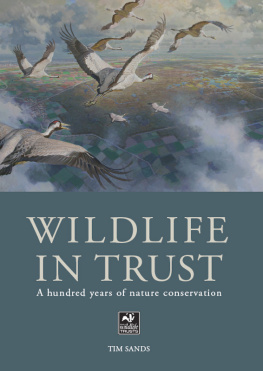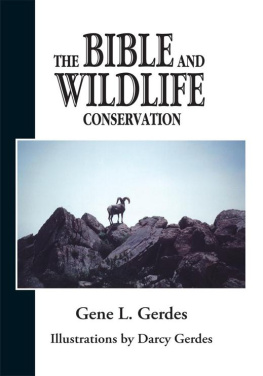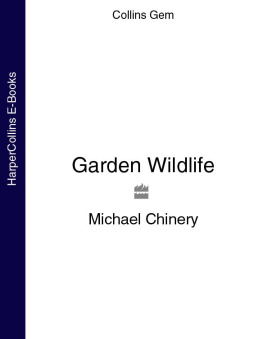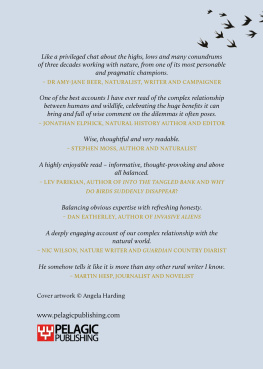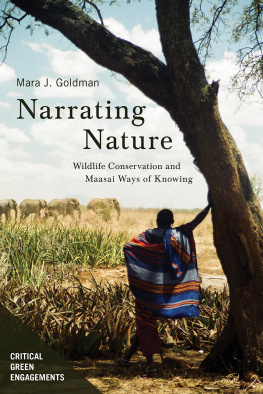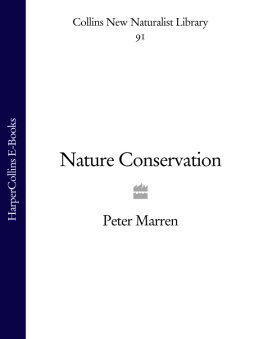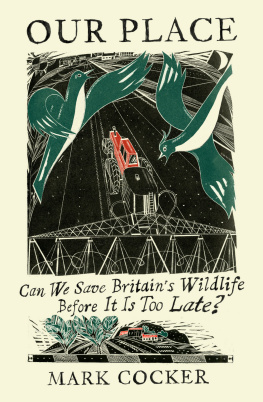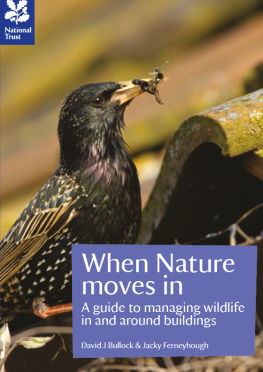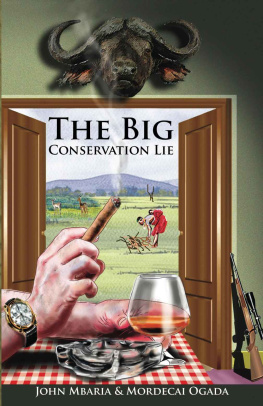WILDLIFE
IN TRUST
To be ignorant of what occurred before you were born is to remain always a child. For what is the worth of human life, unless woven into the life of our ancestors by the records of history?
From Cicero, Orator ad M Brutum, XXXIV (120)

First published in 2012, to commemorate the centenary of
The Wildlife Trusts. This first edition was issued as a limited edition hardback and a soft cover print run
The Wildlife Trusts
The Kiln, Mather Road, Newark, Nottinghamshire NG24 1WT
wildlifetrusts.org
Design, typesetting and origination by FDA Design Limited
Hathersage, Derbyshire S32 1BB
fdadesign.co.uk
First published 2012 by Elliott and Thompson Limited
27 John Street, London WC1N 2BX
eandtbooks.com
ISBN 978 1 9087394 9 0
The Royal Society of Wildlife Trusts 2012
The right of the authors to be identified as the authors of this work has been asserted by them in accordance with the Copyright, Designs and Patents Act 1988
All rights reserved. No part of this publication may be reproduced, stored in or introduced into a retrieval system, or transmitted, in any form, or by any means (electronic, mechanical, photocopying, recording or otherwise) without the prior written permission of the publisher. Any person who does any unauthorized act in relation to this publication may be liable to criminal prosecution and civil claims for damages
Every effort has been made to trace copyright holders for images and extracts used within this book. Where this has not been possible the publisher will be happy to credit them in future editions
A CIP catalogue record for this book is available from the British Library
Front cover: Cranes by Vadim Gorbatov (reproduced with the permission of the Artists for Nature Foundation)
Back cover: Young volunteers at an Urban Wildlife Group event, Birmingham, early 1980s (courtesy of the Wildlife Trust for Birmingham and Black Country)
Contents
PART I
A HISTORY OF THE ROYAL SOCIETY OF WILDLIFE TRUSTS
PART II
HISTORIES OF WILDLIFE TRUSTS
PART III
REFERENCE SECTION
Foreword
In its centenary year, Tim Sands has produced a masterly account of The Wildlife Trusts leading role in the conservation of Britains wildlife heritage and the remarkable changes of character and fortune that it has undergone in the process. Charles Rothschilds reason for founding the Society for the Promotion of Nature Reserves in 1912 was to ensure the protection of places for nature at a time of rapidly growing human demands on land and natural resources. In spite of the preparation of a countrywide list of places worthy of preservation, Rothschilds visionary plans went largely unheeded in a country exhausted by four years of devastating war. It was the devotion of its long-serving Honorary Secretary Dr Herbert Smith that kept the Society alive through the bleak interwar years, and so enabled it to play a vital role in the planning for conservation and nature reserves after the Second World War.
With the creation of the Nature Conservancy and provisions for government action on nature reserves one of Rothschilds principal aims had been achieved, but the future of the Society, hampered by an archaic constitution and meagre resources, was once again uncertain. At that point in the late 1950s, the rapidly growing grassroots movement of county and regional Wildlife Trusts adopted the Society as their national association, providing old premises for a new movement and giving it new life and purpose.
In 1975, at a critical time in the Societys history, the author becomes involved in the action and for the next 30 years fills a succession of senior posts. This ideally qualifies him to compile this history, but as a good historian he makes a dispassionate assessment of developments, seeking the recollections and views of others involved. The Societys first task, as he describes, was to help Trusts strengthen their local base, disseminate experience and attract funding from national sources to enable them to acquire nature reserves and employ staff. Devising a structure and system of governance which reconciles the essential independence of the individual Trusts with their need to act together to achieve shared objectives was not always a smooth process, as his account reveals. But a determination to succeed has produced a strong and influential organisation to serve the interests of the Trusts and promote the environmental and social purposes of wildlife conservation so that Space for Nature is no longer confined to isolated bastions vital though those have been for the last hundred years but becomes an integral element in the management of land and natural resources.
The breadth and variety of the Wildlife Trusts movement is conveyed by accounts of all the 47 associated Trusts and by a Reference Section which describes the events and principal characters which have shaped the development of the Society and the Trusts. Outstanding among those is Tim Sands, the author of this timely and remarkable book, who for more than 40 years with quiet modesty but firm and dedicated purpose has played a vitally important role across the whole of the environmental movement.
Arthur Edward Ted Smith January 2012
Preface
Wildlife in Trust is a history, not the history of The Wildlife Trusts. It is not a book about British wildlife per se. Instead it takes a wider look at the threats that have faced the countrys wildlife and wild places over the past 100 years, and The Wildlife Trusts responses to these challenges. It also provides the organisation with a comprehensive record of its history for the first time.
describes a selection of the most significant moments in the organisations history, from its formation as the Society for the Promotion of Nature Reserves in 1912, through an inter-war lull, to its resurgence during and after the Second World War. It tells the story of how the Society was adopted by the young Trust movement as its national organisation in the 1950s and 60s, and then describes the remarkable expansion of the Trusts and the evolution of their national body.
is a series of essays on the history of the 47 Wildlife Trusts, written by people intimately associated with them. Every Trust has a rich history of its own people and places that is difficult to do justice to in a single essay. Nevertheless, these contributions ensure that the story of local nature conservation is still writ large across the pages of this book.
is a reference section containing additional information about personalities and office holders, campaigns and events, organisations and statistics.
This book is designed to be used as a handbook. Entries in are clearly signposted for those wanting to find out more. This entails a certain amount of repetition but in this way it has been possible for Part I, in particular, to keep to the main path of the story.
I use the Society throughout for the central organisation and, latterly, the collective movement of Trusts. For simplicity, I refer to each of the Trusts using their city, county or country prefix, for example, the Cornwall Trust.
Much of the story in reflects the activities and decisions of the key players and committees and it is their names that dominate the pages of this book. But the dedication and determination of thousands of other people have made the many achievements of The Wildlife Trusts possible. Although their names may not appear, the following pages are testament to their contribution.
Next page
